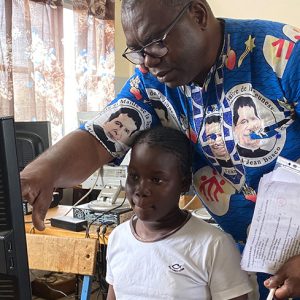Ever thought about how to inspire a passion for science and technology? Immersive, hands-on experiences can make all the difference. STMicroelectronics hosted a STEM event in Monza on October 5th, free and open to everyone. The event, held at the historic Arengario building, featured a variety of activities for students and the public and an exhibition of ST’s products and technologies. ST showcased its latest innovations and technologies to 9,500 visitors, as well as its commitment to STEM (science, technology, engineering, and mathematics) education and local community engagement.
ST commitment in STEM promotion

The event aimed to provide young students an opportunity to explore STEM disciplines and careers. By offering hands-on demonstrations and interactive workshops, ST provided students of all ages with a tangible understanding of STEM concepts and their real-world applications.
This event was also designed to inspire students to explore exciting fields like sustainable mobility, energy efficiency, artificial intelligence, and robotics. It also aimed to support educators and give them material and ideas to explore during the school year.
The demos showcased at the event can be grouped into two broad categories: educational and playful demos, and real-world applications.
Educational and playful demos
This category encompasses demos designed for learning and exploration while playing a game, particularly useful to introduce young learners to advanced concepts.
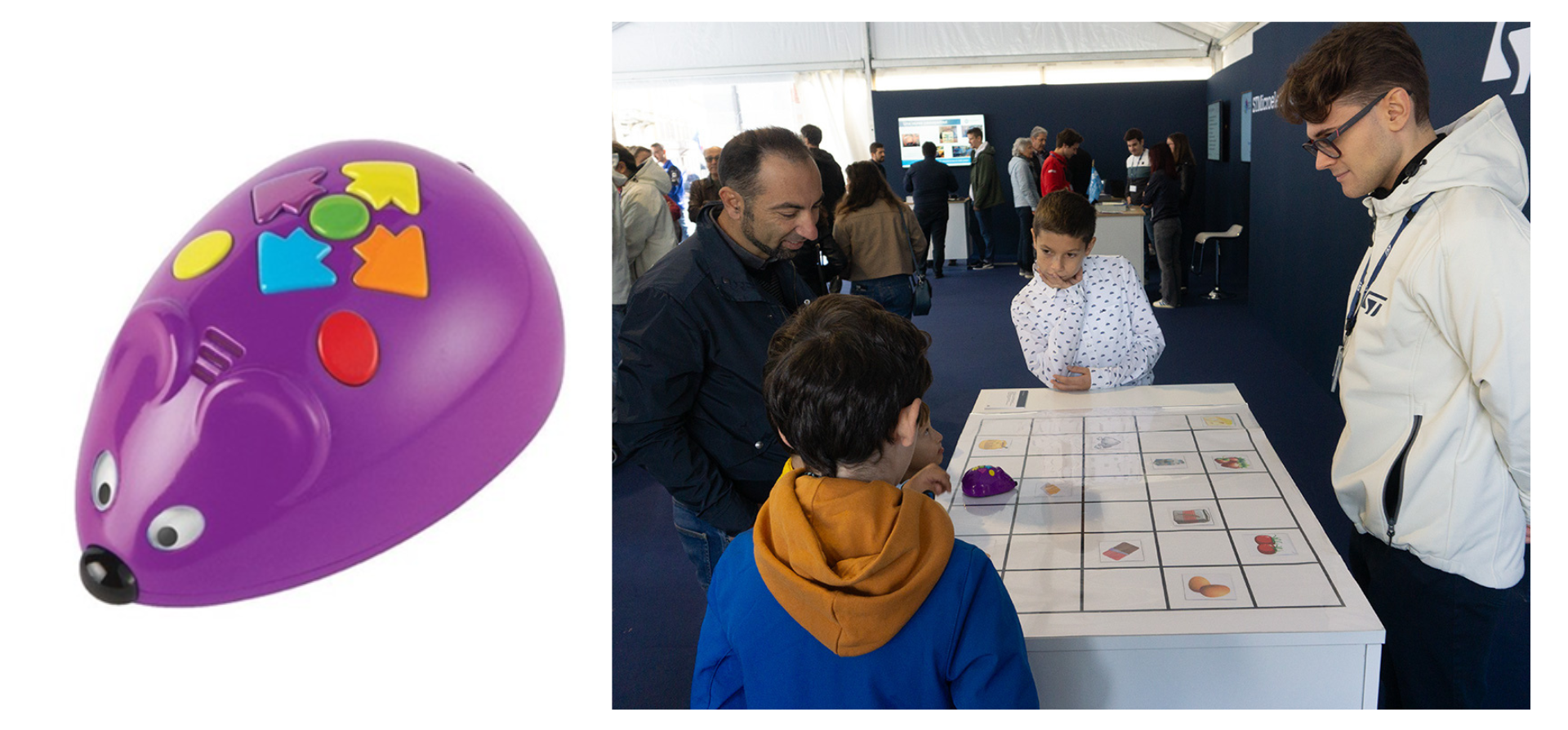
The Robot Menestrello, a cute mouse-shaped robot, is a tool designed for students from kindergarten to primary school. It is ideal for teaching coding, lateralization, spatial orientation, and programming. The robot can memorize a series of basic commands and move along a path based on the recorded commands. It has all the commands easily accessible on its back: go forward or backward, turn left or right.

The Robot Martien (Alphabot2) provides a platform for students in middle school to discover robotics and programming. It integrates a programmable Arduino-compatible module, the Nucleo-WB55RG and the VL53L0X. Its features include line tracking, an ultrasonic sensor to avoid obstacles, an infrared remote control, and Bluetooth communication. Thanks to its design, assembly is particularly simple and quick, without soldering or complicated wiring. After a few minutes dedicated to assembly, it is possible to download the demo source codes and test the robot’s functionalities.
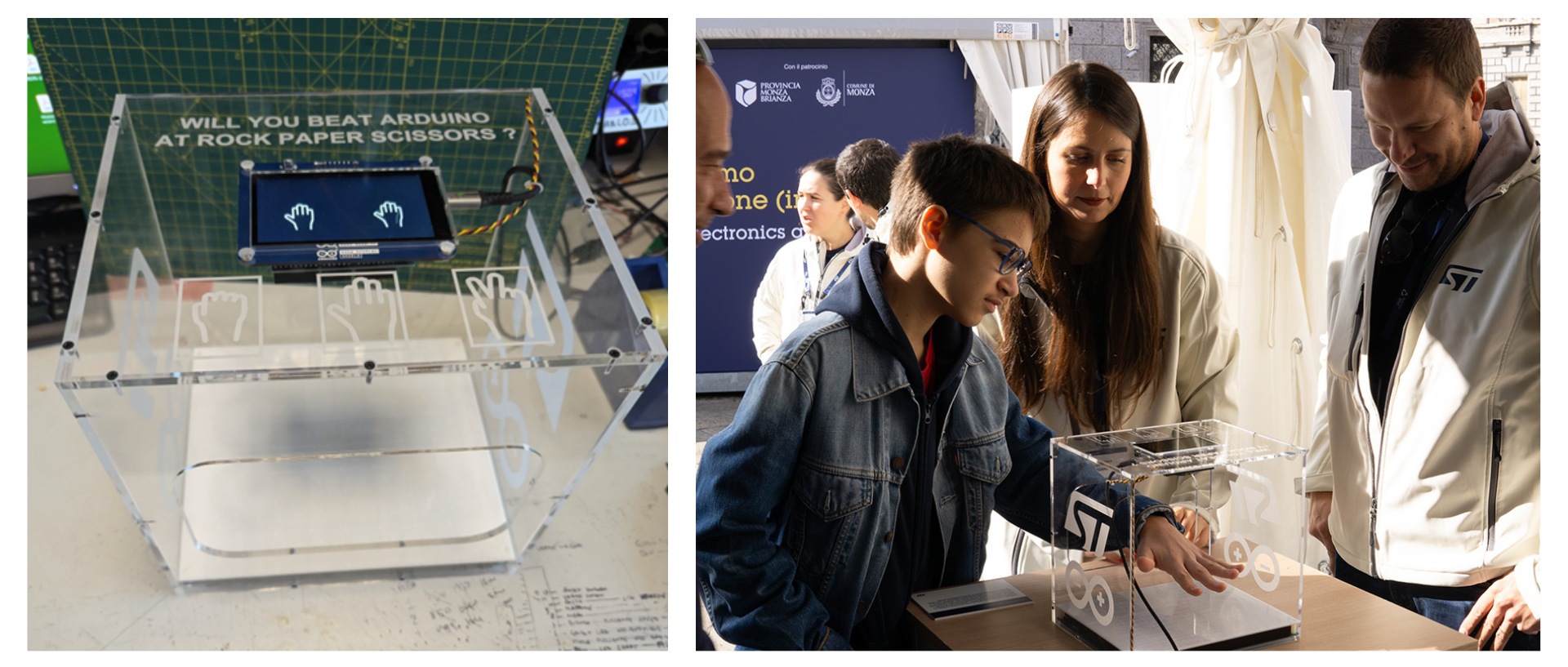
In this “Rock-paper-scissors” game, the user plays against the STM32H7 microcontroller, which is the basis of the ARDUINO GIGA R1 main board. The user inserts their hand into an opening on the front of the plexiglass cube, the Time of flight (TOF) detects the areas covered by the hand in its active matrix, and through some artificial intelligence routines of the NanoEdge AI library, the microcontroller is able to determine the sign made by the user (scissors, paper, or rock) and reproduce it both in the first part of the display and in the LED matrix at the bottom of the cube. It also assigns a different color depending on the distance detected from the relevant area of the TOF. It then randomly generates one of the three signs on the other side of the display, and the application determines the winner by circling the corresponding sign with a green box (red for the loser).
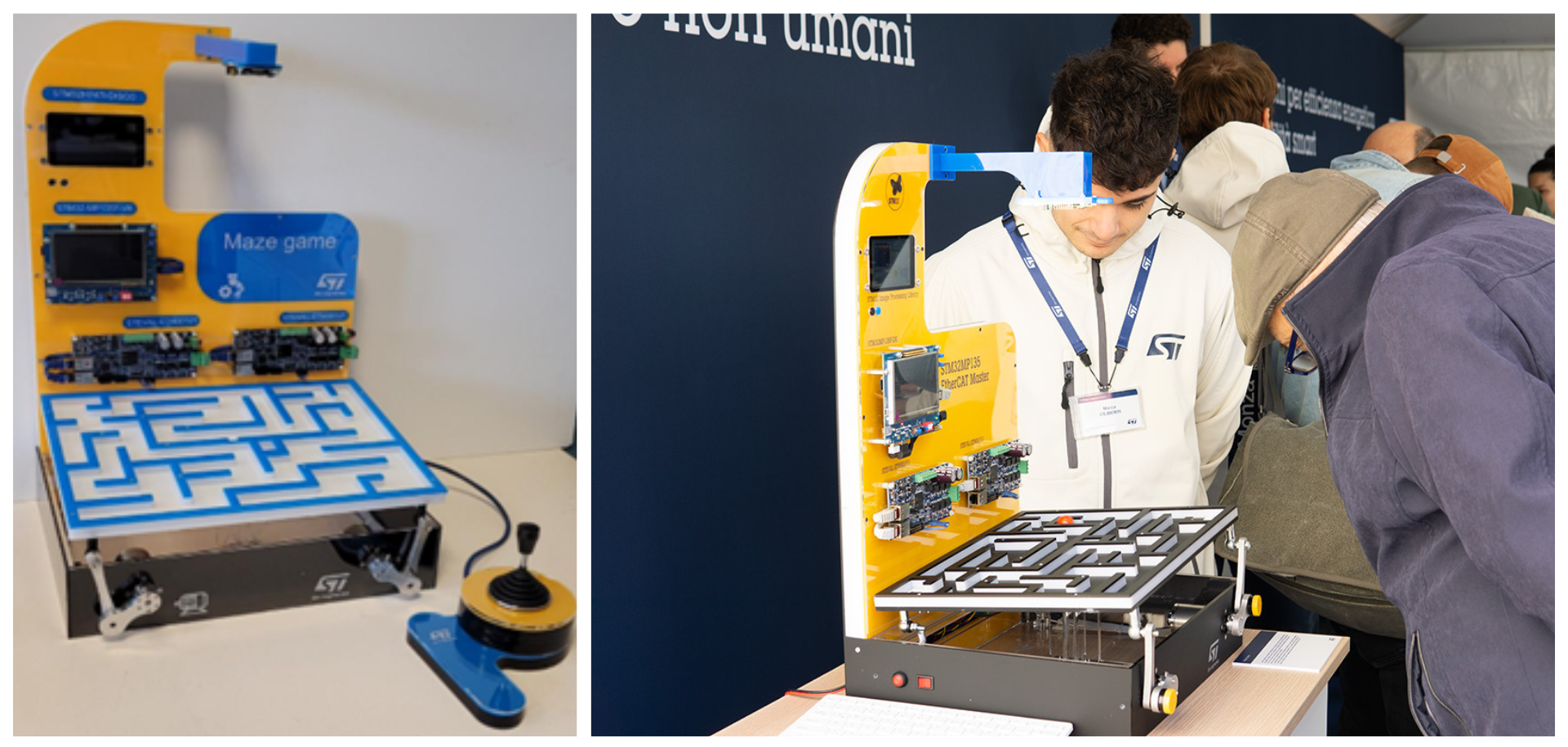
The Maze Game is a motorized game that allows the player to control the tilt of a plate to move a ball within a maze on the plane. The tilt is controlled via two brushless motors that receive commands through a real-time industrial Ethernet protocol (EtherCAT). The game can be either manual or automatic. In the latter mode, the user can place the ball at any point in the maze and, using the camera and AI algorithms, the system calculates the trajectory to solve the maze and move the ball to the exit by automatically tilting the plane. In manual mode, the user can attempt to solve the maze themselves by tilting a PAD that contains an ST MEMS inertial sensor, which replicates the same tilt on the plane with the ball. The PAD can be connected to the system either via cable or wirelessly through Bluetooth connectivity. The system is managed by a STM32MP1 microprocessor running an STLINUX operating system, also utilizing Artificial Intelligence, Camera Vision, and BLE performance libraries.
Real-World Application Demos
These demos highlight the practical implementation of technology in various fields.
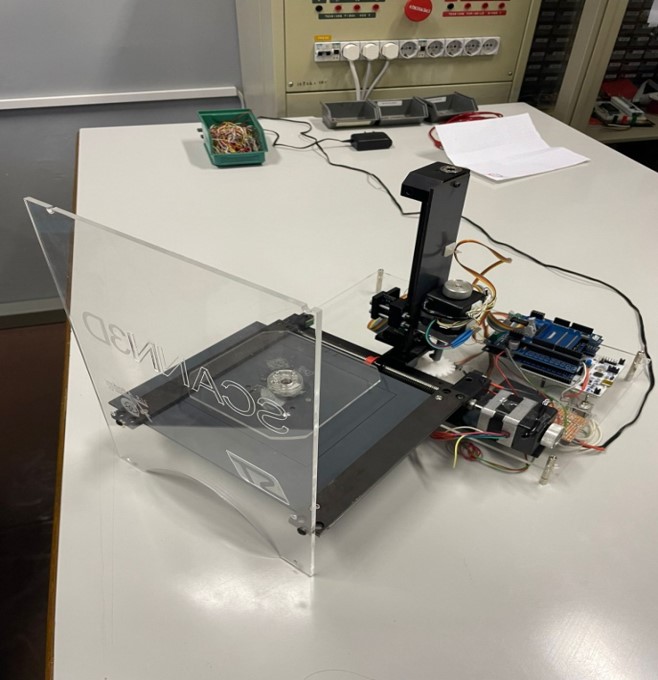
The Scann3D is an economical and simple 3D scanner that uses the Time of Flight sensor from ST combined with two stepper motors. The motors move the sensor along the two axes of the plane to build a matrix of points.
Among its components there are the STM32 Nucleo F401RE, a board for testing and developing electronic projects, the ST Stepper Motor Driver Boards to control the movement of stepper motors and the ST Time of Flight sensor VL53L1, a sensor that measures distance using light.
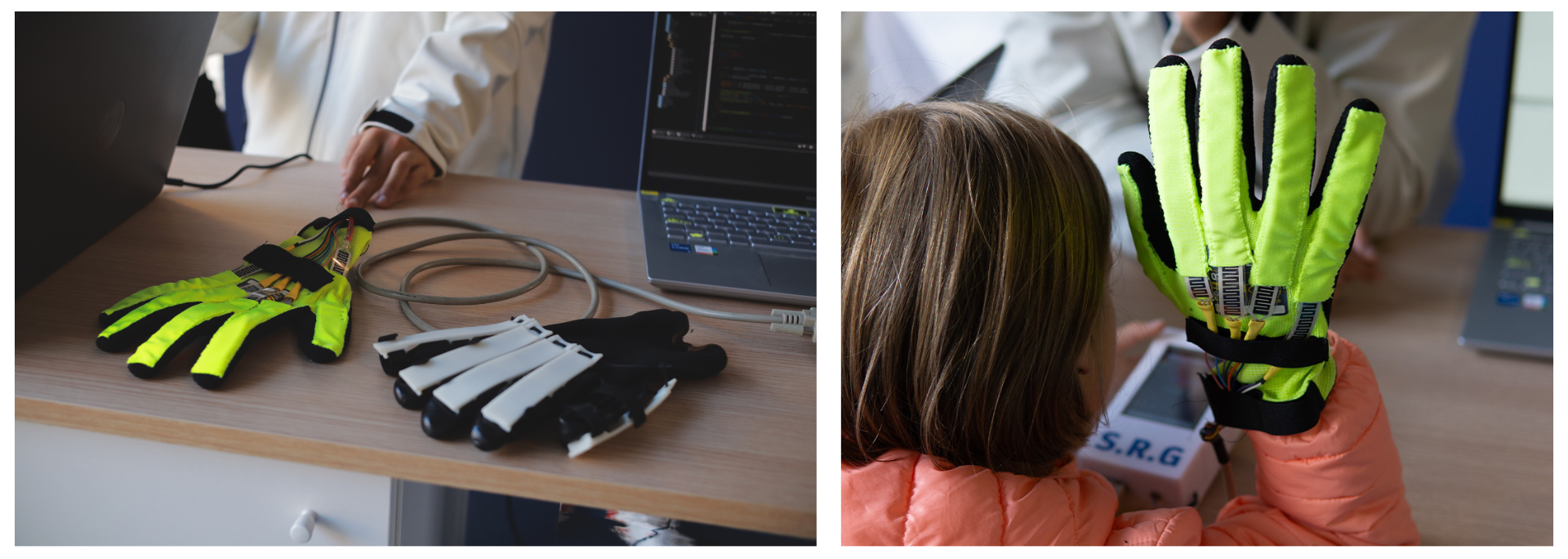
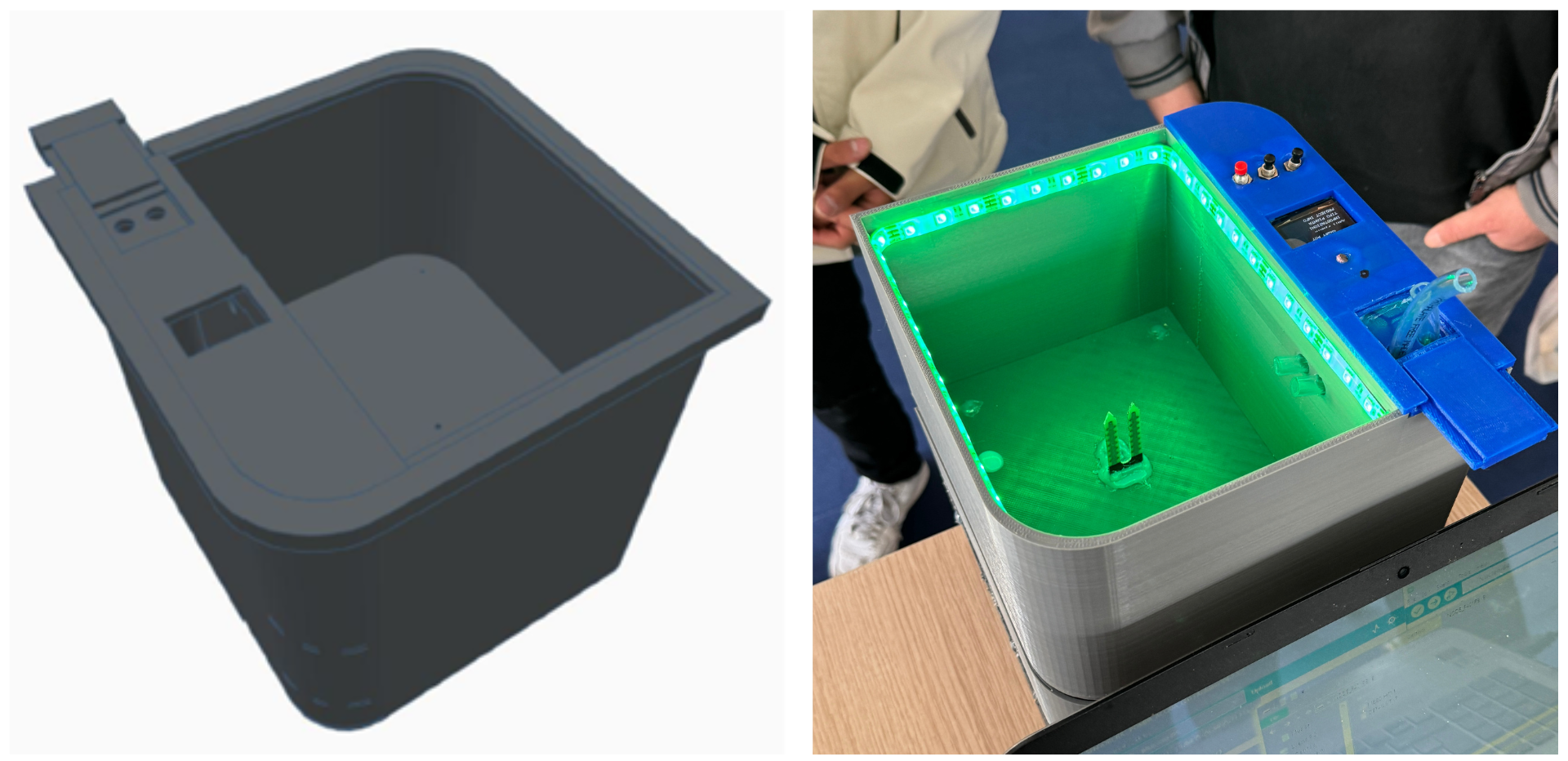
The Smart Rehabilitation Glove and the Smart Pot include the STM32 Nucleo F401RE and the X-Nucleo boards.
- The first one is a glove with an app that allows users to select hand mobility exercises via a touch screen. It uses analog force sensors to track performance, displaying results graphically to motivate patients. The device enables independent rehabilitative exercises, offering immediate feedback without needing specialized personnel.
- The Smart Pot automates plant care, demonstrating the potential of IoT in agriculture.
The Smart Pot automates plant care, showcasing the potential of IoT in agriculture. It monitors key parameters of the cultivation environment, such as light, soil moisture, temperature, and air humidity, in real time via sensors. Data is displayed on a screen or through an app. Automated pumps dispense water and liquid fertilizer from separate tanks as needed. LEDs provide visual alerts and can be controlled via app or light sensors. This innovation benefits everyone from home gardeners to professional nurseries.
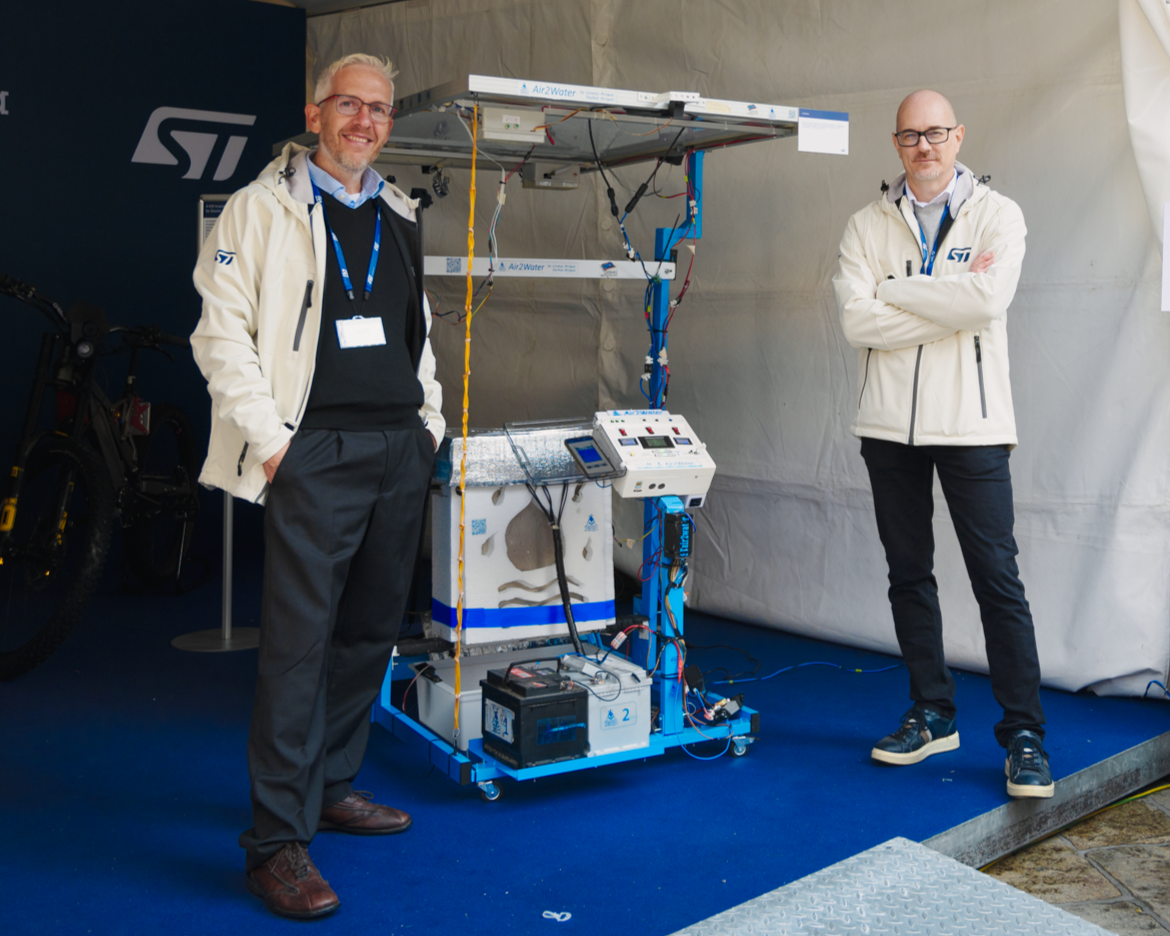
The Air2Water prototype (by Lorenzo and Stefano Arrigoni, developed in collaboration with ST OpusLab and SERMIG – Re.Te group) addresses water scarcity by generating water from air, highlighting a sustainable solution. Powered by the sun, it can also be used in arid and hot regions of the world.
The machine is designed for floor installation and managed by STM32 microcontrollers and sensors (key components include STM32, S2-LP radio, VL6180X proximity and light sensor , and L6470 motor driver) that ensure both monitoring and remote control of the system.
The PoliMI Motorcycle Racing Team projects and the PoliTo Car Racing Team project exemplify the use of technology in high-performance engineering and racing.
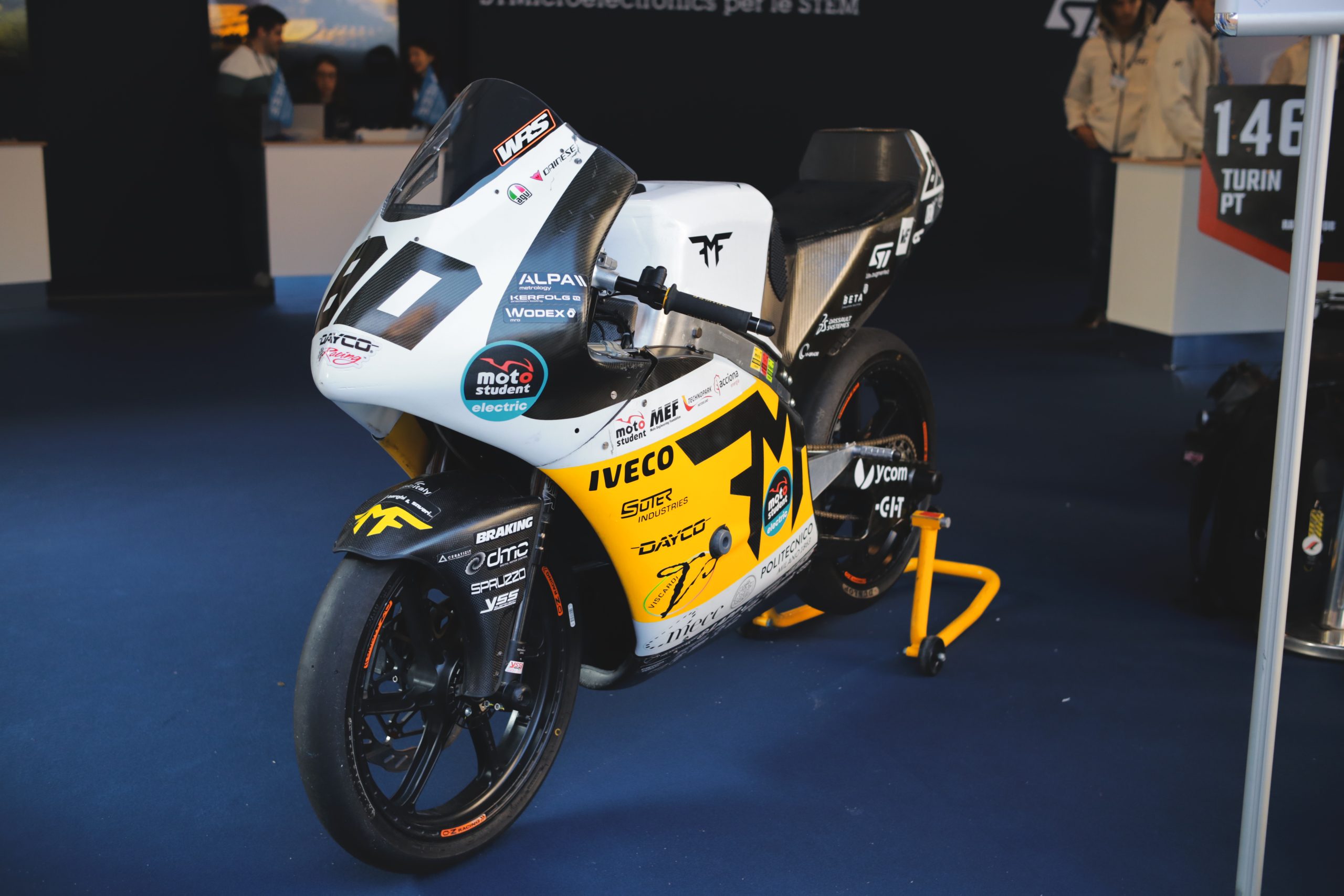
The Tatanka electric bike demo showcases the latest prototype featuring a custom-designed battery pack and BMS (Battery Management System). Developed in collaboration with PoliMI, the bike includes a sensor acquisition board, ECU (Electronic Control Unit), and a custom dashboard. STMicroelectronics components like the STM32F103RBTX microcontroller, L9963T transceiver, L9963E voltage acquisition chip, and STM32F767ZIT6 microcontroller power these systems. This innovative electric bike exemplifies advanced engineering and sustainable transportation solutions.
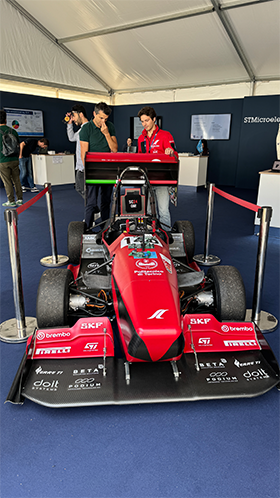
The SC24, ANDROMEDA electric car demo features a race car developed with STMicroelectronics components for various ECUs and a custom dashboard, all created by the racing team. The hardware and software for the HV and LV BMS, powertrain, and electronics are entirely custom-built. Key ST components include battery management system chips (L9963E, L9963T), memory chip (M95256-RMN6TP), protection diodes (SM4T33AY, SMA6T68AY), power transistors, microcontrollers (STM32) and operational amplifiers.
Discover more on upcoming events and technical seminars



